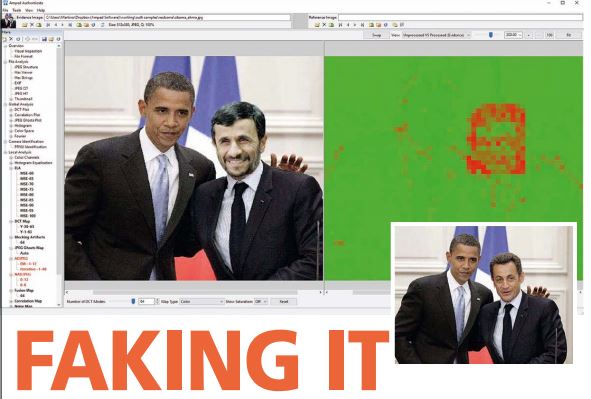
As technology has enabled mainstream, widespread image manipulation, it is not surprising that there has been a huge increase in the number of tampered images which find their way into a wide spectrum of industries and sectors. Incidents of doctored images frequently appear in mainstream media where they incite cries of “fake news”.
For example, a photo at the G20 summit this year featured a photoshopped president Putin, giving the impression that he was colluding with president Donald Trump. The photo proceeded to spread like wildfire across the internet, instigating huge political ramifications from a digital fabrication which would have taken a few minutes to create on a laptop. Last August also showed our vulnerability to tampered photos, with the circulation of a photoshopped image of a shark swimming up the freeway during hurricane Harvey indicating a larger problem with major international news outlets spreading the image as genuine.
Equally there is significant evidence of doctored images being used to support fraudulent scientific research internationally. Doctored experiment results and images continue to rock the research industry with every new fraudulent revelation. A prominent cancer research scientist in Italy has been under investigation for using a photography studio to manipulate images pivotal to the crux of the “ground breaking” research. Indeed, the journal Nature has suggested that up to 1 in 5 scientific papers contain evidence of some sort of manipulation.
It is clear therefore, that when the stakes are high enough, people will manipulate the truth, and unfortunately given our tendency to trust photographic images, it seems that it is currently worth their while to do so. When the stakes are as high as imprisonment, it is easy to see how tempting it may be to manipulate an image to support an alibi or a particular version of events.
Unfortunately, security investigations are by no means immune to this phenomenon either. In fact, given the increase in the sources of digital images, the integrity of evidence in such investigations is at its all-time most vulnerable. Body worn cameras, smart phones and increasingly sophisticated CCTV surveillance means that investigators are now dealing with a fast-growing pile of unverified evidence.
Read the full article published in The Intersec Journal of International Security.



